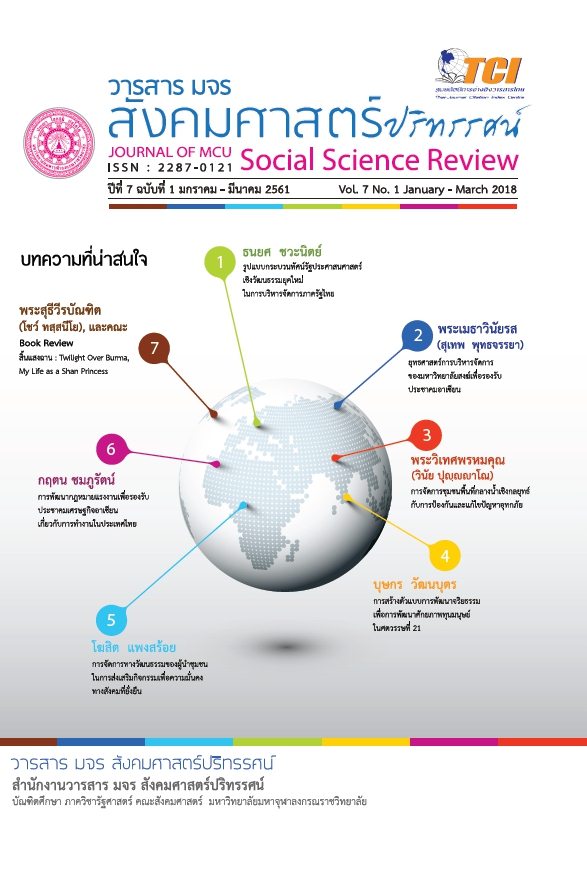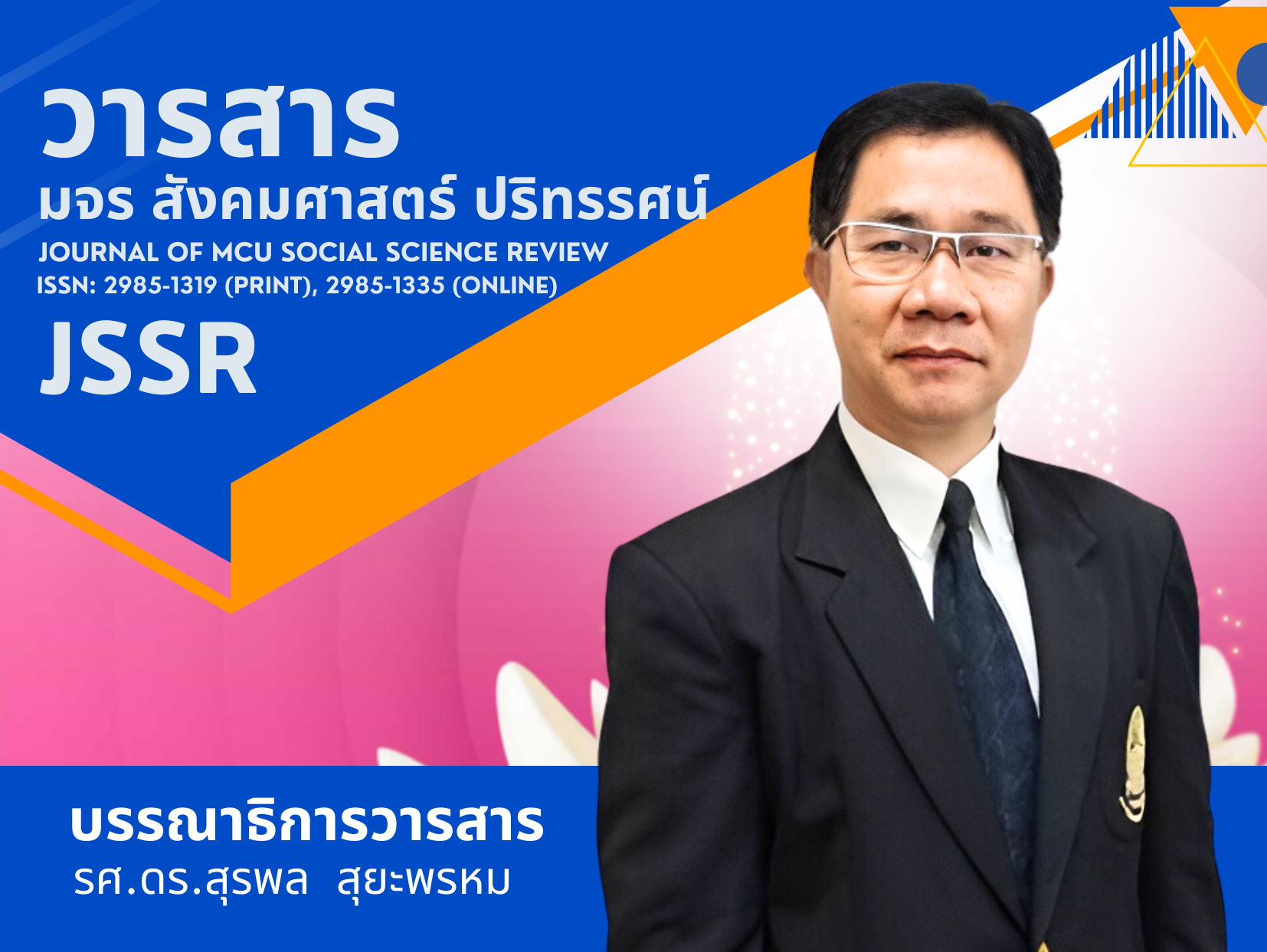PROCEDURAL MODEL FOR YOUTH DHARMA PRACTICE PROGRAMS TO STRENGTHEN SOUTHERN ISAN COMMUNITIES
Keywords:
Buddhism, development, Dharma Practice, youthsAbstract
This qualitative investigation has three aims: 1) to study the background of dharma practice projects for youths in southern Isan; 2) to study the current state and problems with the procedures of dharma practice projects for youths in southern Isan; 3) to study a procedural model for dharma practice projects for youths in southern Isan. the investigation began in December 2014 and combined documentary research and field study. The research area was selected using a purposive sampling technique. the three provinces selected were Nakhon Ratchasima, Chaiyaphum and Buriram. Research informants were purposively selected from local populations. These were divided into three groups: key informants (n=18), casual informants (n=60) and general informants (n=20). Data was collected in the field for this investigation using basic survey, participant and non-participant observation, structured interview, unstructured interview and focus-group discussions. Field investigation found that planning of dharma practice projects is lacking in the advice and expertise of external specialists. there is a lack of trainers to work at the dharma practice projects and not enough varied evaluation of teacher and student satisfaction with the activities. Based on the findings concerning the first two research objectives, the researchers designed a procedural model for dharma practice projects for youths in southern Isan. The model is structured according to the 4ms: man, money, materials and management.
References
Chantachon, S. (2006). Cultural Qualitative Research. Mahasarakham: Research Institute of Northeastern Art and Culture.
Chantavanit, S. (2000). Qualitative Research Method. Bangkok: Chulalongkorn University Press.
Horayangura, N. (2007). “Interpreting ‘Right Livelihood’: Understanding and Practice in Contemporary Thailand”. In Proceedings of the Third International Conference on Gross National Happiness. Thimpu: The Centre for Bhutan Studies.
Kanenaen, A. (2012). Suitable Methods for Monks Disseminating Buddhism to Children and Youths in Bangkok (Ph.D. Thesis). Mahasarakham University, Mahasarakham.
Nakata, T. (2000). Thai Politics and Administration: Duty of the nation. Bangkok: Sahai Blocking and Printing.
Pidok, Phra T. (1995). Dharma practice the right way. Bangkok: Sahatamik.
Ruangkanchanasetr, S., Plitponkarnpim, A., Hetrakul, P., & Kongsakon, R. (2005). “Youth risk behavior survey: Bangkok, Thailand”. Journal of Adolescent Health, 36(3), 227-235.
Sonna, A. (2010). Method of Developing Morality and Ethics Using Buddhist Methods for Upper Secondary Students in Nakhon Ratchasima Province (PhD Thesis). Mahasarakham University, Mahasarakham.
Suwannasri, S. (2009). Creating Peace in Society: A Study of the Integration of the Procedures for Disseminating Buddhism and Christianity in Isan.(PhD Thesis). Mahasarakham University, Mahasarakham.
Downloads
Published
How to Cite
Issue
Section
License
Copyright (c) 2019 Journal of MCU Social Science Review

This work is licensed under a Creative Commons Attribution-NonCommercial-NoDerivatives 4.0 International License.
In order to conform the copyright law, all article authors must sign the consignment agreement to transfer the copyright to the Journal including the finally revised original articles. Besides, the article authors must declare that the articles will be printed in only the Journal of MCU Journal of Social Sciences. If there are pictures, tables or contents that were printed before, the article authors must receive permission from the authors in writing and show the evidence to the editor before the article is printed. If it does not conform to the set criteria, the editor will remove the article from the Journal without any exceptions.




